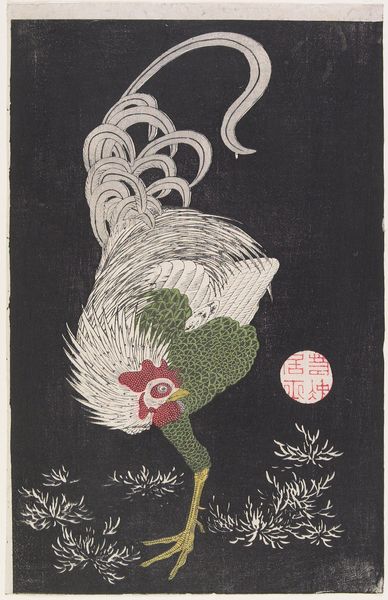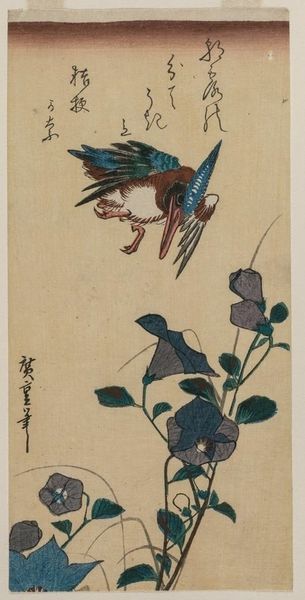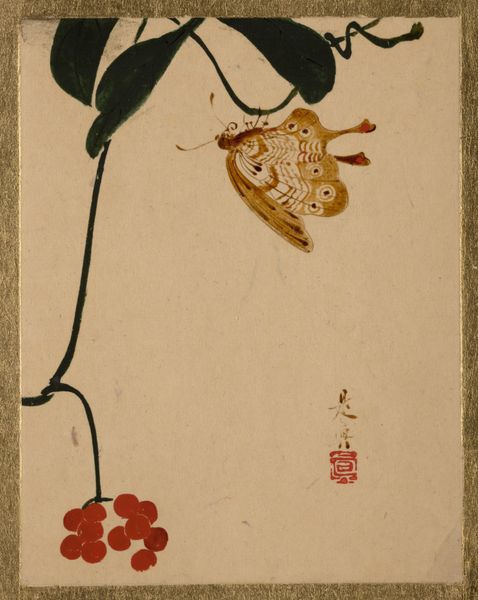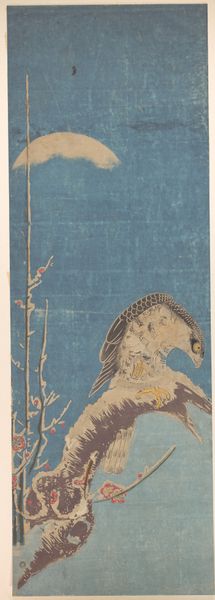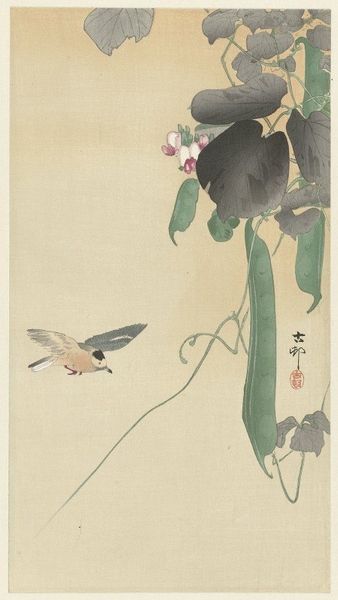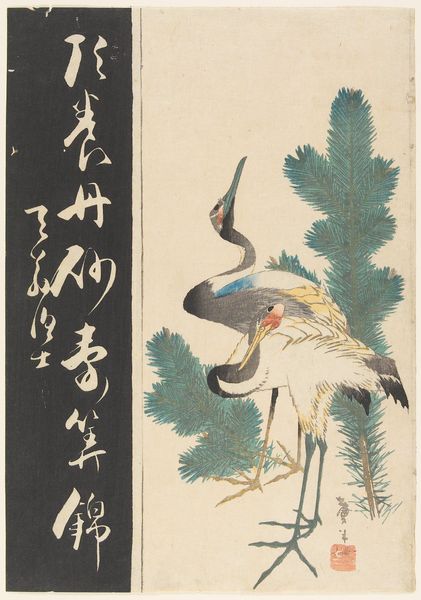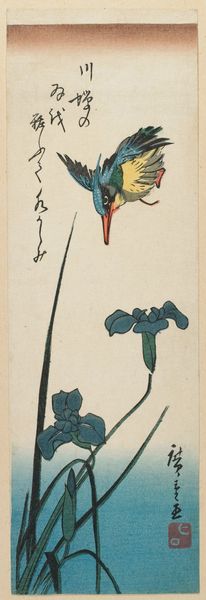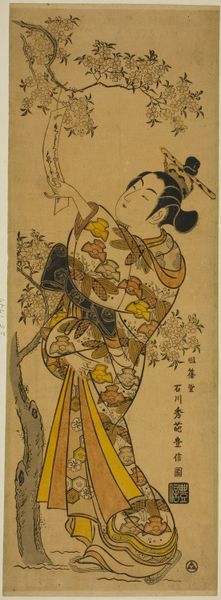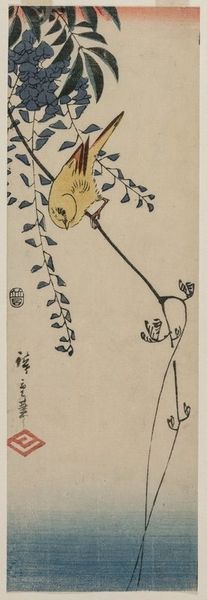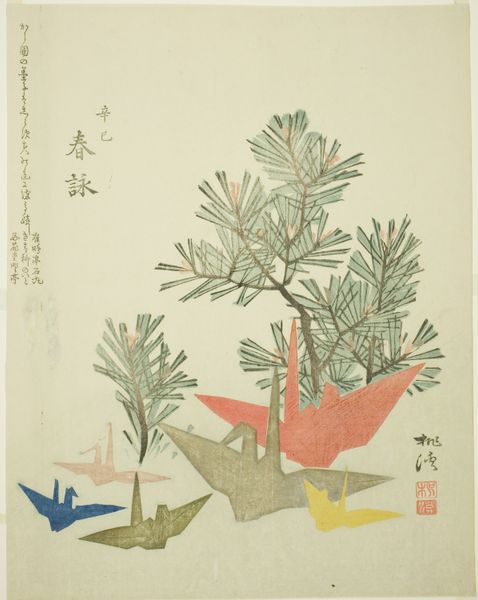
print, watercolor, ink, woodblock-print
#
water colours
# print
#
asian-art
#
landscape
#
ukiyo-e
#
japan
#
watercolor
#
ink
#
woodblock-print
Dimensions: 13 7/16 × 4 7/16 in. (34.2 × 11.2 cm) (image, sheet, aitanzaku)
Copyright: Public Domain
Editor: This woodblock print, *Camellia and Sparrows in Snow*, by Utagawa Hiroshige, dates to around the 1830s. I'm immediately struck by the delicate balance between the harsh winter scene and the vibrant life suggested by the camellia and the birds. What do you see as you look at this piece? Curator: As a historian, I see this piece existing within a very specific cultural moment. Hiroshige worked during the late Edo period, when ukiyo-e prints became increasingly popular among a burgeoning merchant class. These prints offered a glimpse into the everyday world and natural beauty that might have been otherwise inaccessible. Editor: So it was like a widely accessible art form? Curator: Precisely. Consider the role of woodblock printing as a mass medium. The imagery, which seems purely decorative to modern eyes, also played a vital role in shaping perceptions of landscape and even national identity. How does the choice of subject matter—birds and flowers in a snow scene—fit into that context, do you think? Editor: Perhaps it offers a sense of resilience? Despite the cold and snow, there's still beauty and life. Maybe that was something the rising merchant class appreciated and could connect to in their own lives. Curator: An interesting observation! These prints weren't just passively consumed. They actively shaped social values and tastes. Think about the network of artists, publishers, and consumers that supported this art form. They all participated in creating a visual culture with shared understandings of beauty, nature, and society. Editor: So much more than just a pretty picture. I'm seeing it as a vital part of a whole system. Curator: Indeed. The beauty of Hiroshige's print lies not just in its aesthetic appeal, but in its position as a crucial part of a larger cultural and economic landscape. Editor: I’ll definitely look at these ukiyo-e prints differently now. I've always just admired the surface, but this gives me a new appreciation.
Comments
No comments
Be the first to comment and join the conversation on the ultimate creative platform.
